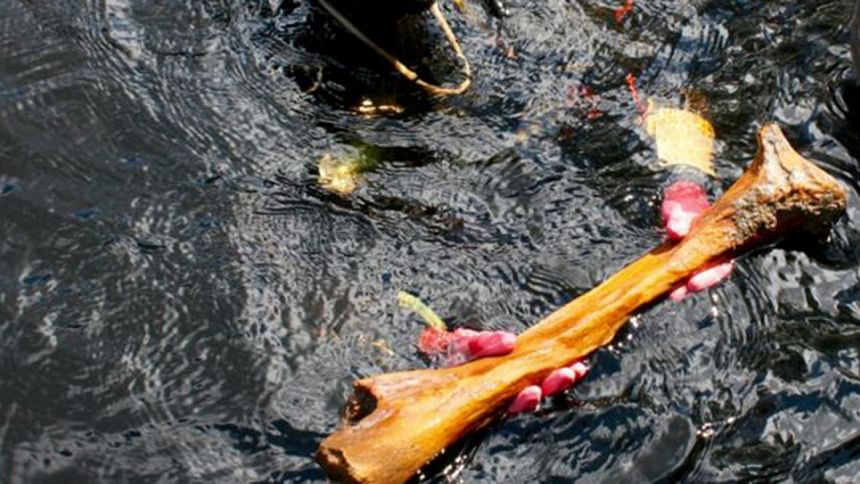Mastodon meal scraps revise US prehistory

Stone tools and bones from a butchered mastodon, found at the bottom of a river in Florida, are shaking up the known history of humans in the region.
A four-year investigation of the site has firmly concluded that humans lived there and, in particular, made a meal of a mastodon 14,550 years ago.
This is more than a millennium earlier than humans were thought to have settled the south-eastern US.
The findings are reported in the open access journal Science Advances.
They reinforce the idea that humans settled the Americas well before the Clovis people arrived about 13,000 years ago. For many years, the Clovis were thought to have been "the first Americans".
In fact, the mastadon tusk that is the centrepiece of the Florida haul, complete with apparent cut marks and accompanying tools, was first found and dated in the 1980s - but the discovery gained little traction.
"[It] was an impossible date for the scientific community to accept at the time, because it was well accepted that the Americas were colonised by the Clovis people, who arrived on the continent over the Bering land bridge no longer than 13,500 years ago at the oldest," said Jessi Halligan, lead author of the new study and assistant professor of anthropology at Florida State University.
That view, however, has gradually been revised as more and more evidence accumulates that humans arrived thousands of years earlier - perhaps as early as 16,000 years ago, when the last ice age was only beginning to thaw.
But that evidence remains scarce, and the new study provides the best evidence yet for such a presence in the south-east of the US.
For the new study, the original tusk was re-examined and a wealth of further evidence, including many more tools, dung samples and animal bones, was excavated from the same murky sinkhole 10m under the waters of the Aucilla River.
Before the river and sediments were laid down, this area appears to have contained a water hole where both animals and humans gathered. The mastadon was either hunted or scavenged, and butchered using tools like the small stone knives found at the scene.
"These excavations were successful beyond our dreams," Dr Halligan told journalists in a teleconference.
One of her co-authors, Prof Michael Waters from Texas A&M University, has been involved in the debate about human settlement of the Americas for many years.
"The site is a slam-dunk pre-Clovis site with unequivocal artefacts, clear stratigraphy and thorough dating," he said.
"The stone tools and faunal remains at the site show that at 14,550 years ago, people knew how to find game, fresh water and material for making tools. These people were well-adapted to this environment."

 For all latest news, follow The Daily Star's Google News channel.
For all latest news, follow The Daily Star's Google News channel. 








Comments